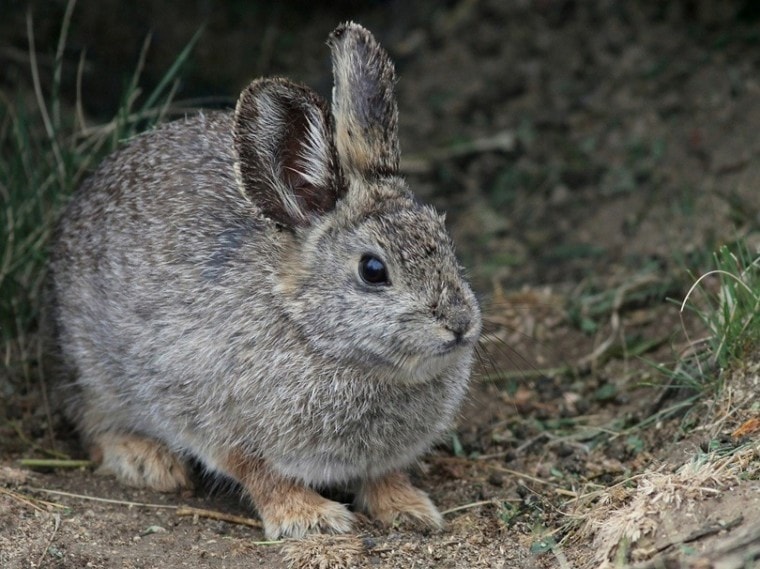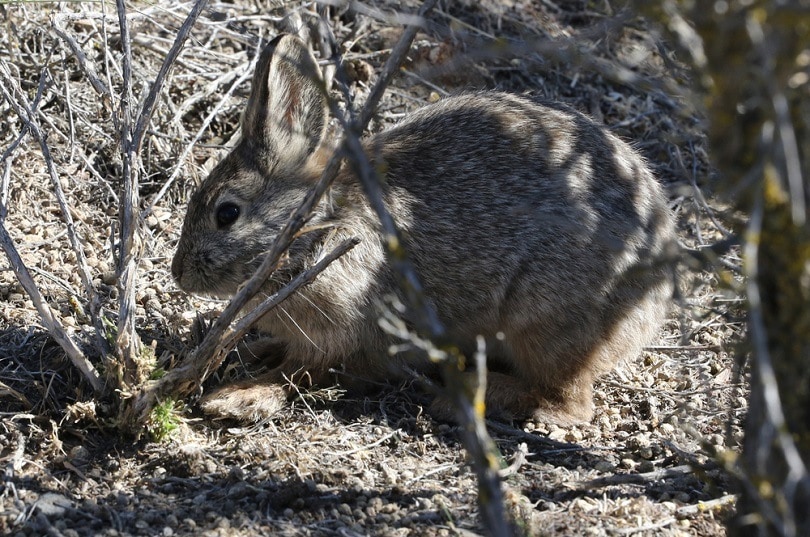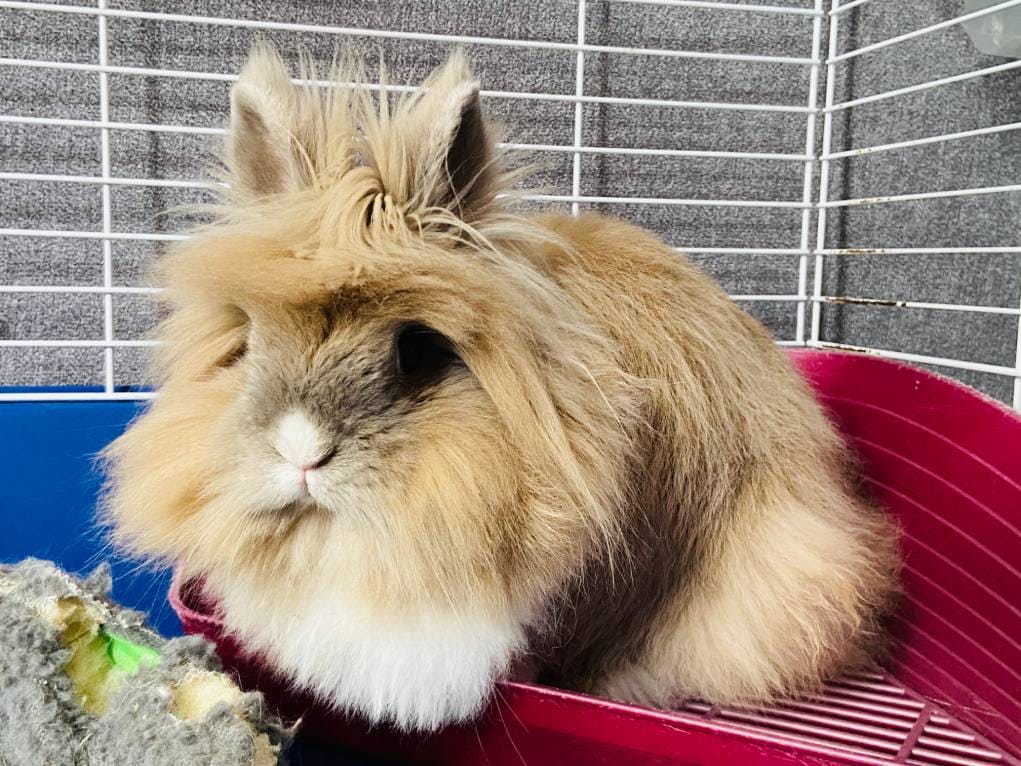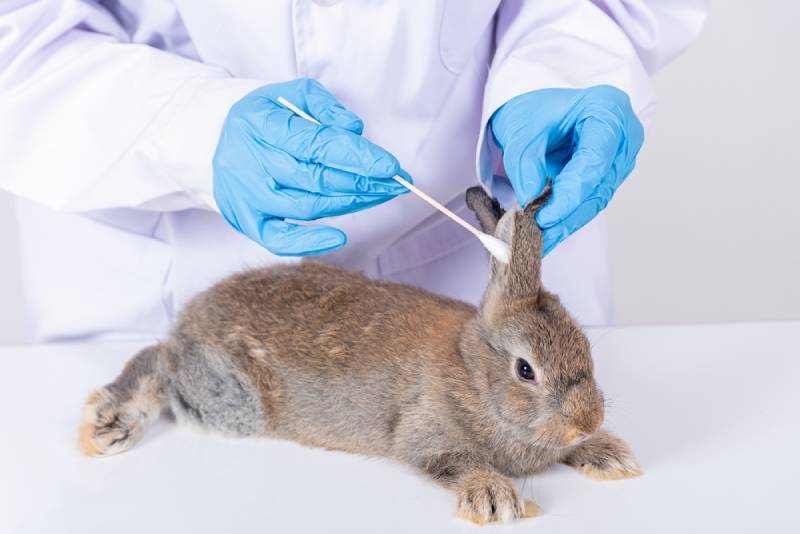
Click to Skip Ahead
Please note: the Columbia Basin Pygmy Rabbit is an endangered species that should never be kept as a pet. Habitat destruction, an increase in predator populations, and the deadly Rabbit Hemorrhagic Disease Virus are all playing a role in putting their population at high risk of extinction. Currently, great efforts are done by the U.S. Fish & Wildlife Service and the Washington Department of Fish & Wildlife to help the species recover. Learn more about this program here.
As one of the smallest rabbits in North America, the Columbia Basin Pygmy Rabbit is an adorable rabbit species native to the Columbia Basin in North America. Despite their cute appearance and compact size, however, the Columbia Basin Pygmy Rabbit is considered an endangered species and is not suitable as pets.
To provide knowledge and raise awareness regarding these unique creatures, we will explore various aspects of this fascinating breed, including its traits, lifespan, and care requirements!
Breed Overview
Size:
Miniature, around 10 inches
Weight:
Less than 1 pound
Lifespan:
3 to 5 years
Similar Breeds:
Netherland Dwarf, Mini Rex, Holland Lop
Suitable for:
Experts and Professionals, not suitable as pets
Temperament:
Shy, Skittish, Nervous, Elusive
The Columbia Basin Pygmy Rabbit (Brachylagus idahoensis) is a tiny and endangered rabbit species that is indigenous to the sagebrush habitats of North America’s Columbia Basin. As the smallest rabbit species on the continent, they typically measure about 10 inches in length and weigh less than a pound.
With their unique physical attributes, such as short legs, round bodies, and diminutive tails, these rabbits possess distinctive features. Their dense and soft fur is typically grayish brown, which provides excellent camouflage within their natural environment. Additionally, their large eyes and ears aid in detecting potential threats in their surroundings.
Columbia Basin Pygmy Rabbit Breed Characteristics
Columbia Basin Pygmy Rabbits: an Endangered Species
Columbia Basin Pygmy Rabbits are extremely rare and currently listed as an endangered species. Their decline is primarily attributed to habitat loss and fragmentation, as well as competition with other animals.
Due to their protected status, it is not only discouraged but illegal to own or trade these rabbits. As a result, they are not commercially available, and there is no set price for them.

Temperament & Intelligence of the Columbia Basin Pygmy Rabbit
Columbia Basin Pygmy Rabbits are known for their shy and elusive nature. They are highly adapted to their natural environment and have developed keen instincts for survival. While their intelligence is not extensively studied, these rabbits exhibit behaviors that reflect their ability to navigate their surroundings and find suitable resources.
As mentioned earlier, Columbia Basin Pygmy Rabbits are not suitable as pets. They are a critically endangered species, and their conservation should be the primary focus. It is essential to respect their natural habitat and contribute to efforts aimed at preserving their population.
Does This Rabbit Get Along with Other Animals?
Since Columbia Basin Pygmy Rabbits are wild animals, they are not accustomed to living with domestic pets. It is not advisable to introduce them to other animals, as it can lead to stress, aggression, and potential harm to both the rabbit and the other pets.
In the wild, Columbia Basin Pygmy Rabbits are solitary in nature. They are not inclined to seek social interaction with humans or other animals. Due to their shy and elusive nature, they prefer to maintain their distance and remain cautious in their environment.

Things to Know About Columbia Basin Pygmy Rabbits:
Food & Diet Requirements 🥕
Columbia Basin Pygmy Rabbits have a specialized diet consisting mainly of sagebrush. In captivity, replicating their natural diet is challenging. These rabbits require a high-fiber diet, including hay, grass, and fresh leafy greens.
Consult with wildlife experts or conservation organizations for specific dietary recommendations if you are involved in conservation efforts.
Habitat 🏠
Columbia Basin Pygmy Rabbits have specific habitat requirements that mimic their natural environment. They thrive in open sagebrush landscapes with plenty of hiding places.
In captivity, recreating such an environment is difficult and should only be attempted by experienced professionals for conservation purposes.
Exercise & Sleeping Needs 🐇
Columbia Basin Pygmy Rabbits are naturally active animals, exploring their environment and foraging for food. They require ample space for exercise and mental stimulation.
In the wild, they create burrows for shelter and sleep. Captive environments should mimic this, providing suitable hiding spots and secure spaces.
Lifespan and Health Conditions 🏥
Columbia Basin Pygmy Rabbits have an average lifespan of 3 to 5 years in the wild. In captivity, with proper care, they may live slightly longer.
As wild animals, these rabbits can be susceptible to various health conditions. It is important to note that due to their endangered status, only qualified professionals can handle their medical needs.
Male vs Female
In terms of physical appearance and general characteristics, there is no significant difference between male and female Columbia Basin Pygmy Rabbits. Both male and female Pygmy Rabbits possess similar traits and behaviors in the wild.
 3 Little-Known Facts About the Columbia Basin Pygmy Rabbit
3 Little-Known Facts About the Columbia Basin Pygmy Rabbit
1. Columbia Basin Pygmy Rabbits Are the Smallest Rabbit Species in North America
Columbia Basin Pygmy Rabbits hold the distinction of being the smallest rabbit species in North America. Measuring around 10 inches in length and weighing less than a pound, they exhibit remarkable compactness. Despite their diminutive size, these rabbits possess unique characteristics that enable them to thrive in their natural habitat.
2. Columbia Basin Pygmy Rabbits Have a Specialized Digestive System
Sagebrush, which constitutes a major portion of their diet, is a plant with low nutritional value. To survive, these rabbits have evolved to extract essential nutrients from this fibrous and challenging food source.
Their digestive system effectively breaks down and assimilates the nutrients from sagebrush, enabling them to sustain themselves in their environment.
3. These Rabbits Can Withstand Harsh Living Conditions
Columbia Basin Pygmy Rabbits have developed mechanisms to cope and survive in the challenging living conditions of their habitat. They are highly adapted to their environment which allows them to endure extreme temperatures.
Their small size helps minimize heat loss and allows them to conserve energy, and their dense fur provides insulation and protection from temperature fluctuations. These adaptations enable them to endure both scorching summers and freezing winters.
In addition, they have behavioral adaptations such as burrowing and seeking shade to regulate their body temperature and find refuge from the elements. This behavior also allows them to hide from predators.
Alternative Rabbit Breeds That Can Make Great Pets
Several rabbit breeds make wonderful pets and can be considered as alternatives to the Columbia Basin Pygmy Rabbit. Rabbits such as the Netherland Dwarf, Holland Lop, Mini Rex, and Lionhead Rabbits make wonderful companions and are well-loved by many rabbit enthusiasts.
Netherland Dwarfs are an excellent choice for those seeking a small-sized companion, known for their adorable appearance and friendly nature. Holland Lops, with their distinctive floppy ears, are popular for their gentle temperament and suitability for families. Mini Rex rabbits are known for their plush velvety fur and friendly personalities. Lionhead rabbits, with their distinctive manes of fur around their heads, are known for their playful and outgoing nature.
These rabbit breeds can provide companionship and joy as pets, but it’s important to remember that each breed has specific care requirements, and prospective owners should ensure they can meet the needs of their chosen breed before committing.

Final Thoughts
Although adorable, compact, and native to the Columbia Basin, these Pygmy Rabbits are not suitable for domestication. Due to habitat loss and fragmentation, competition with other animals, and genetic factors, the population of these rabbits has drastically declined and they are currently listed as an endangered species and receive protection under the Endangered Species Act.
Conservation efforts are focused on preserving and restoring their natural habitat, captive breeding programs, and reintroduction into suitable areas. It is crucial to raise awareness about their endangered status and the importance of conserving their population to ensure their survival for future generations.
As a critically endangered species, Columbia Basin Pygmy Rabbits are not suitable as pets. Their conservation should be the primary concern, and any interactions with these rabbits should be handled by qualified professionals in conservation organizations or wildlife agencies.
See Also:
Featured Image Credit: Randy Bjorklund, Shutterstock


 3 Little-Known Facts About the Columbia Basin Pygmy Rabbit
3 Little-Known Facts About the Columbia Basin Pygmy Rabbit





